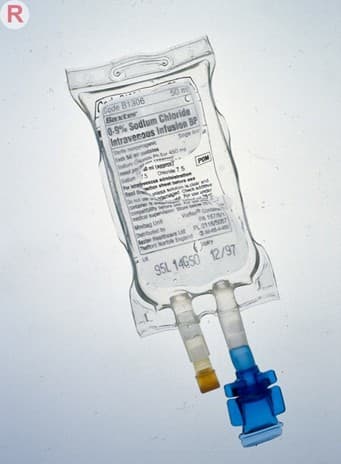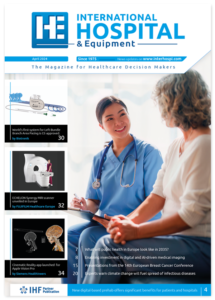Experts challenge universal fluid protocols in septic shock treatment
An editorial in the Journal of Intensive Medicine questions the rigid 30 mL/kg fluid resuscitation guideline for septic shock patients, arguing that individualised treatment strategies based on patient-specific factors could improve outcomes whilst reducing risks associated with excessive fluid administration in this life-threatening emergency condition.
Septic shock remains one of the most lethal emergencies in critical care medicine, affecting thousands of patients globally each day. The cornerstone of initial management has long been aggressive intravenous fluid administration to correct hypovolaemia and restore organ perfusion. However, a new editorial published in the Journal of Intensive Medicine on 4 September 2025 challenges the entrenched practice of administering at least 30 mL/kg of crystalloids within three hours to all patients.
Professor Jean-Louis Teboul from the University of Paris-Saclay, Dr Jiao Liu from Shanghai Jiao Tong University Medical School Affiliated Ruijin Hospital, and Professor Olfa Hamzaoui from University Hospitals of Reims Champagne-Ardenne argue that this standardised approach, whilst historically justified, no longer aligns with contemporary evidence or clinical practice.
“Initial fluid resuscitation remains a cornerstone in the management of septic shock,” the authors state. “However, the uniform liberal approach of giving large volumes to every patient is now considered outdated, particularly in the absence of objective volume assessment.”

Rather than providing a standardized treatment for patients with septic shock, experts argue that the treatment should be tailored based on the heterogeneity of sepsis.
Historical context reveals changing paradigm
The 30 mL/kg recommendation emerged during the 1980s and 1990s, when clinical practice differed markedly from today. High tidal volume mechanical ventilation (10–15 mL/kg) was standard, mean arterial pressure targets frequently exceeded 80 mmHg, and vasopressor therapy typically commenced only after fluid administration was complete. Moreover, strategies aimed at maximising cardiac output popularised liberal fluid resuscitation in high-risk surgical patients.
Contemporary practice has shifted substantially. Protective ventilation strategies now employ lower tidal volumes, blood pressure targets have decreased to 65–70 mmHg, vasopressors are initiated earlier, and routine cardiac output maximisation has been abandoned. These changes fundamentally alter the physiological rationale for aggressive fluid loading.
The authors note that current guidelines reflect this uncertainty. The Surviving Sepsis Campaign still recommends a minimum of 30 mL/kg within three hours, though this carries only a weak recommendation based on low-quality evidence. The primary supporting study found increased mortality in patients receiving less fluid, yet 79% of these patients never required vasopressors and 85% were never mechanically ventilated, suggesting many did not meet strict criteria for septic shock.
Evidence mounting against one-size-fits-all approach
Recent research demonstrates considerable heterogeneity in fluid requirements amongst septic shock patients. Studies show that a substantial proportion become fluid-unresponsive shortly after resuscitation begins, indicating their initial requirements were rather limited. In patients with underlying cardiovascular comorbidities, administering 30 mL/kg within three hours may pose additional risks.
The deleterious effects of fluid accumulation in septic patients are now well established. Excessive fluid administration may exacerbate endothelial injury and glycocalyx disruption, potentially worsening the very pathophysiology clinicians aim to correct. The editorial emphasises that recommending a minimum of 30 mL/kg without individualised evaluation implicitly assumes all patients have an absolute volume deficit exceeding two-thirds of their plasma volume—approximately 45 mL/kg—a presumption that clearly does not hold for every case.
“Although indiscriminate fluid administration is clearly inappropriate, overly restrictive strategies may also be harmful, especially in patients with profound hypovolaemia due to substantial fluid losses or abdominal sepsis,” the authors caution. They advocate for a balanced, individualised approach that considers the clinical context.
Guidelines diverge as evidence evolves
International guidelines now offer contrasting recommendations. Whilst the Surviving Sepsis Campaign suggests a minimum of 30 mL/kg, the European Society of Intensive Care Medicine has adopted a more cautious stance, suggesting up to 30 mL/kg during initial resuscitation depending on clinical context. This conditional recommendation, based on very low certainty of evidence, emphasises tailoring fluid administration to individual patient characteristics and assessing fluid responsiveness before further administration.
“These opposing recommendations highlight the central role of individualised initial fluid management, particularly in the context of septic shock, where the first few hours of care are critical to patient outcomes,” the authors write. “Estimating fluid requirements based solely on body weight is insufficient, especially given the heterogeneity of sepsis and the wide variability in the degree of hypovolaemia across patients.”
Practical strategies for bedside individualisation
The editorial outlines practical approaches to personalise fluid therapy even without advanced haemodynamic monitoring. Bedside-applicable assessments such as passive leg raising combined with changes in pulse pressure or velocity-time integral measured by transthoracic echocardiography can identify when patients become fluid-unresponsive, helping prevent excessive accumulation.
Clinicians should consider multiple factors including infection source, comorbidities, estimated fluid losses, and readily available haemodynamic markers such as pulse pressure. Critically, fluid management should be guided by frequent reassessment rather than waiting the full three hours.
“Regardless of the approach, clinicians should always consider the broader clinical picture,” the authors emphasise. “Most importantly, fluid management should be guided by frequent haemodynamic reassessment, rather than waiting the full three hours.”
The editorial acknowledges that whilst advanced monitoring tools exist, they are not always available. However, repeated use of dynamic indicators of preload responsiveness allows clinicians to identify when patients become fluid-unresponsive. Some patients may require more than 30 mL/kg, whilst others may need significantly less.
This comprehensive review provides a timely synthesis of evolving evidence and contrasting international guidance on initial fluid resuscitation in septic shock. By highlighting the historical context, current limitations, and practical alternatives to rigid protocols, the authors make a compelling case that the first fluid bolus is too important to be dictated by a one-size-fits-all rule.
As septic shock continues to challenge intensive care clinicians worldwide, this editorial signals a broader shift towards precision medicine approaches that recognise patient heterogeneity and prioritise individualised assessment over standardised volume targets.
Reference
Teboul, J.-L., Liu, J., & Hamzaoui, O. (2025). Initial fluid resuscitation in septic shock: Reassessing the 30 mL/kg paradigm. Journal of Intensive Medicine, 5, 298–300. https://doi.org/10.1016/j.jointm.2025.08.001

